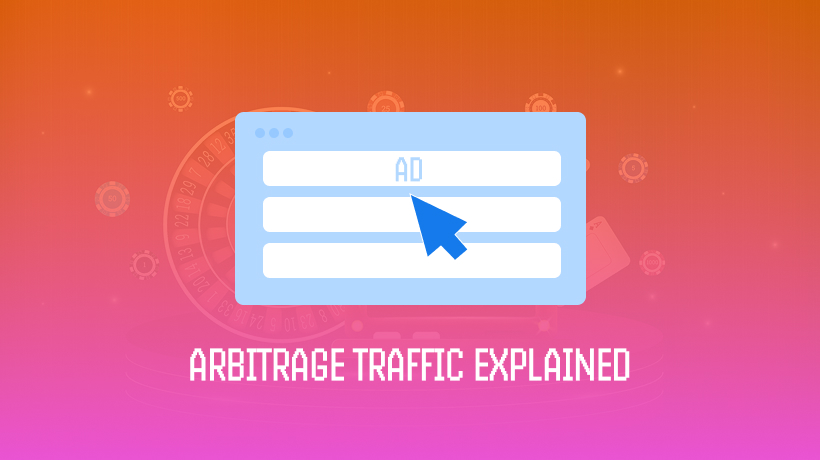What actually happens is a potential player in Germany, for instance, clicks your Facebook ad, then instead of landing on your generic homepage, they’re automatically sent to a German-language page featuring Euro-friendly payment methods, games popular in their region, and bonuses that comply with German gambling laws. The whole process takes under 200 milliseconds.
The goal is not to trick users or use shady tactics, it’s smart redirection to create better experiences that benefit everyone. Players benefit by receiving relevant content in their language with payment methods they trust, and you benefit by getting higher conversion rates and staying compliant with local regulations.
The numbers do all the talking, as operators using strategic traffic redirection see 30-50% higher conversion rates compared to those sending everyone to the same generic landing page. That’s the difference between a 2% conversion rate (industry average) and 4-8% (what top operators achieve).
This matters more than ever since 85% of iGaming traffic now comes from mobile devices, and mobile users expect instant, personalised experiences. For instance, a player on their phone in Brazil doesn’t want to navigate through English menus to find Portuguese content and local payment options — they’ll just bounce to a competitor faster than you can say “customer acquisition cost.”
The core business benefits are straightforward:
- Compliance: Automatically serve region-appropriate content
- User experience: Match players with relevant offers and interfaces
- Revenue optimisation: Route traffic to your highest-converting promotions
Ready to stop leaving money on the table? Smart redirection turns your scattered traffic into converting customers who are focused and who actually stick around.
The 4 Main Types of Redirects Every Operator Should Know
Not all redirects are the same since each type serves a specific purpose in your conversion optimisation toolkit. Here’s what you need to understand about the four redirect methods that actually move the needle for iGaming operators.
Geographic Redirects (Compliance-First)
This is your legal safety net. Geographic redirection uses IP detection to automatically route users based on their location. For example, when someone from the UK visits your site, they’re instantly directed to your UK Gambling Commission-licensed domain with proper consumer protections and responsible gaming tools.
Services like MaxMind GeoIP2 are known to provide 99% country-level accuracy. That means virtually every visitor gets routed to the right regulatory environment from the start. No compliance headaches and no accidental violations.
Device-Based Redirects (Mobile vs Desktop)
With 85% of iGaming traffic coming from mobile devices, this redirect type is a must. Mobile users get streamlined experiences, so consider direct routes to your app download page or simplified registration flows. Desktop users see full-featured experiences with detailed game previews and comprehensive bonus information.
The key difference between mobile and desktop? Mobile users convert 40% better when they hit mobile-optimised pages instead of desktop versions squeezed onto small screens.
Technical Redirects (301 vs 302)
Here’s where many operators mess up:
- 301 Permanent Redirect: Use when permanently moving pages (old game URLs to new licensed versions). Passes full SEO value to the new page.
- 302 Temporary Redirect: Perfect for A/B testing different landing pages. Preserves the original page’s search ranking.
Getting this wrong not only costs you search traffic, but also conversion opportunities.
Smart Testing Redirects (A/B Testing)
This allows you to test five different bonus offers without changing your ad creative. Route 20% of traffic to each variant, identify the winner, then send all future traffic to the highest-converting option.
Operators have been noted to use this method to test welcome bonuses and discovered their 150% match offer converted 60% better than their original 100% match, without spending extra on ads.
| Redirect Type | Primary Use | Conversion Impact | Setup Complexity |
|---|---|---|---|
| Geographic | Compliance & localisation | 30-40% lift | Medium |
| Device-based | Mobile optimisation | 25-45% lift | Low |
| Technical (301/302) | SEO & testing | Varies | Low |
| A/B Testing | Offer optimisation | 15-60% lift | Medium |
Getting Started: Most operators see the biggest immediate wins from device-based redirects using basic tools such as Cloudflare. Begin there, then include geographic targeting for compliance as you scale.
How Smart Redirects Turn More Visitors Into Players
Personalisation That Converts
Here’s a real scenario where two players click your ad simultaneously:
- Player A: Browsing from Sweden on desktop during lunch break.
- Player B: On mobile in Brazil, checking odds while watching football.
Your redirect system instantly serves:
- Swedish Player: Desktop-optimised page in Swedish kronor, featuring popular Nordic payment methods like Trustly, and slot games from NetEnt.
- Brazilian Player: Mobile-streamlined page in Portuguese showing real-time football betting odds, Pix payment options, and a welcome bonus tailored to Brazilian betting preferences.
Same ad, yet completely different experiences that speak to each user’s specific context. The result? 40% higher conversion rates compared to generic landing pages.
Removing Friction from the Player Journey
- Language barriers disappear: Auto-detect browser language and serve content accordingly.
- Currency confusion vanishes: Display prices in local currency from the first page view.
- Payment method matching: Show only payment options that actually work in their region.
- Compliance builds trust: Players feel safer seeing proper licensing badges and responsible gaming tools.
- Device optimisation: Mobile users skip desktop forms designed for keyboards and mice.
Speed Matters: Redirects under 200 milliseconds feel instant. Slow redirects (2+ seconds) destroy the experience and send users bouncing to competitors.
Before and After Results
| Without Smart Redirects | With Smart Redirects |
|---|---|
| 2.1% conversion rate | 3.4% conversion rate |
| 67% bounce rate | 43% bounce rate |
| 1.8 pages per session | 2.9 pages per session |
| Mixed traffic quality | Higher-value signups |
One operator saw their average session duration jump from 2.1 minutes to 4.7 minutes after implementing behavioural redirect targeting. Casual players were directed to beginner-friendly promotions, while high-stakes players were routed to VIP experiences.
Bottom line: When users land on pages that feel designed specifically for them, they convert. Smart redirects create those “this is exactly what I was looking for” moments that turn curious clickers into depositing players.
Setting Up Redirects the Right Way (And Avoiding Costly Mistakes)
Quick Setup Essentials
- Start with compliance: Implement geographic redirects using geolocation services. Cloudflare’s free tier works for most, while GeoTargetly offers more advanced targeting.
- Test everything: Use VPN services to check redirects from different countries and ensure load speeds stay under 200ms.
- Keep it simple: Use single-hop redirects only — no multi-step chains.
Common Mistakes That Ruin Conversions
- Redirect chains are conversion killers: Each additional redirect loses about 10% of page authority and increases bounce rates.
- Wrong redirect types cost SEO juice: Using 302 temporary redirects instead of 301s leads to lost rankings.
- Speed kills more than content: Load times over 2 seconds cause 47% of users to bounce.
- Compliance violations are expensive: Incorrect targeting can lead to fines like the £6M fine for Gamesys in 2024.
| Do This | Avoid This |
|---|---|
| Single-hop redirects | Redirect chains (A→B→C→D) |
| 301 for permanent moves | 302 for everything |
| Test mobile experience first | Desktop-only testing |
| Under 200ms redirect speed | 2+ second load times |
| Geographic compliance filtering | Generic global pages |
| Track performance metrics | Set and forget approach |
Measuring Success and Taking Your Redirects to the Next Level
Essential Metrics to Track
- Conversion rate by redirect type
- Bounce rate comparison (redirect vs direct traffic)
- Revenue per redirected user
- Page load speed for redirect flows
- Geographic performance differences
Benchmark Reality Check: Industry average conversion sits at 2.6%, but operators using strategic redirects consistently hit 4-8%.
Tools You Actually Need
- Basic: Google Analytics 4 for tracking redirect performance.
- Advanced: Voluum or RedTrack for real-time optimisation and attribution.
Your Quick Win Priorities
| Priority Level | Focus Area | Expected Impact |
|---|---|---|
| 1st Week | Mobile redirect optimisation | 25-40% conversion lift |
| 1st Month | Geographic compliance setup | Risk reduction + 15-30% lift |
| Months 2-3 | A/B testing redirect offers | 15-60% performance gains |
ROI Reality: Leading operators achieve 325% ROI through optimised redirect strategies. Even basic device-based redirects deliver 25-40% conversion improvements in the first month.
Your Next Steps: Pick one redirect type, implement it properly, run it for two weeks, then measure results before adding complexity. Success comes from doing the basics exceptionally well, not from trying to implement everything at once.
Traffic redirection isn’t optional anymore, it’s essential competitive advantage. Start simple, measure everything, and scale what works.








